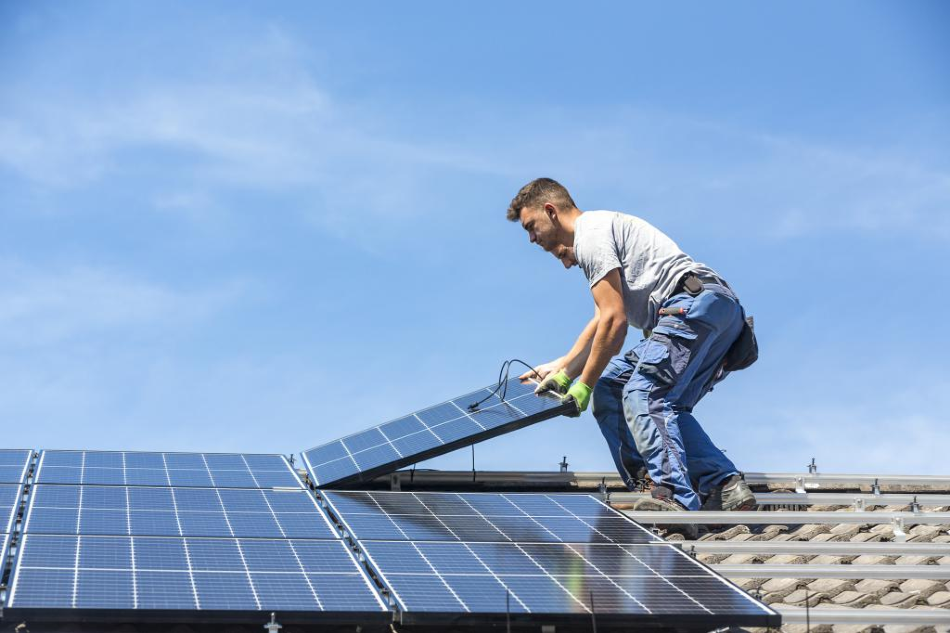Feb 3 2020
According to a new PV Status report, set renewable energy targets cannot be met unless the EU’s photovoltaics (PV) installation rate is increased significantly.
 A much more rapid increase in the installation rate is needed to decarbonize the power sector by 2050. Image Credit: ©mmphoto—Adobe Stock.com.
A much more rapid increase in the installation rate is needed to decarbonize the power sector by 2050. Image Credit: ©mmphoto—Adobe Stock.com.
The present policies that have been implemented to reduce the emission of global greenhouse gases (GHGs) are not adequate to limit the rising temperature to less than 2 °C.
The single most crucial component to meet that target is the decarbonization of the energy system. To meet the climate targets, the power industry has to be completely decarbonized much before 2050 and not by 2060. PV represents a major technology for applying this change.
PV is a key technology option for decarbonising the power sector. It can be deployed in a modular way almost anywhere, solar resources in the world are abundant and they cannot be monopolised by one country.
Piotr Szymanski, Director, JRC
PV Installation Rate Not on Track to Meet Climate Targets
The PV status report of JRC outlines the gap that exists between the European and global climate targets and the deployment speed of solar power.
Although the new installed capacity increased worldwide by 7% and solar power attracted the largest share of new investments in renewable energies for the 9th year in a row, a much more rapid increase in the installation rate is needed to decarbonise the power sector by 2050.
Arnulf Jäger-Waldau, Study Author, European Commission
An installed capacity of 117 GW by the end of 2018 has set back the EU in the global market. In the global installed capacity, the EU’s share was around 23%—a marked reduction from the 66% recorded toward the end of 2012.
Considering the present capacity, the EU can offer close to 5% of its electricity demand.
By 2025, the EU should boost its PV capacity from 117 GW to more than 630 GW, and by 2050, the capacity should increase to 1.94 TW to cover 100% of its electricity demands by renewable energy, according to the latest 100% RES scenario of the Energy Watch Group.
Developing Economies Invest More in Renewables than Developed Countries
In the last few years, the PV sector has changed significantly. Until 2006, Europe and Japan dominated the production of solar cells, but in 2014, Taiwan and China quickly increased their production capacities, giving rise to a new trend.
Since that time, other Asian nations like Thailand, Malaysia, India, Vietnam, and the Philippines have followed the lead.
Developing economies continued to invest more in renewable energy capacity when compared to the developed nations, and this trend went on in 2018 for the fourth consecutive year.
Currently, China takes the top place as a major manufacturing nation for solar modules and solar cells, followed by Taiwan and Malaysia in the second and third place, respectively.
In total, €122 billion was invested in solar power across the world in 2018, and out of this, €65 billion (54%) was invested in developing countries.
Bringing PV Manufacturing Back to Europe is Possible
Within the EU, the production capacity of solar modules and solar cells is currently just 3 GW and 1 GW, respectively. Where a secure supply is concerned, the increased installations of PVs should be correlated by actual regional production.
The abrupt reduction of PV manufacturing costs would qualify for a new look at the prospects of bringing the PV factories back to Europe.
The investment costs needed for PV manufacturing have reduced by around 90% in the last decade. With an annual production capacity ranging from 5 to 10 GW, the European manufacturing chain could well compete with factories.
There are huge opportunities for PV in the future, but such developments will not happen on their own. It will require a sustained effort and support of all stakeholders to implement the change to a sustainable energy supply, with PV delivering a major part.
Arnulf Jäger-Waldau, Study Author, European Commission